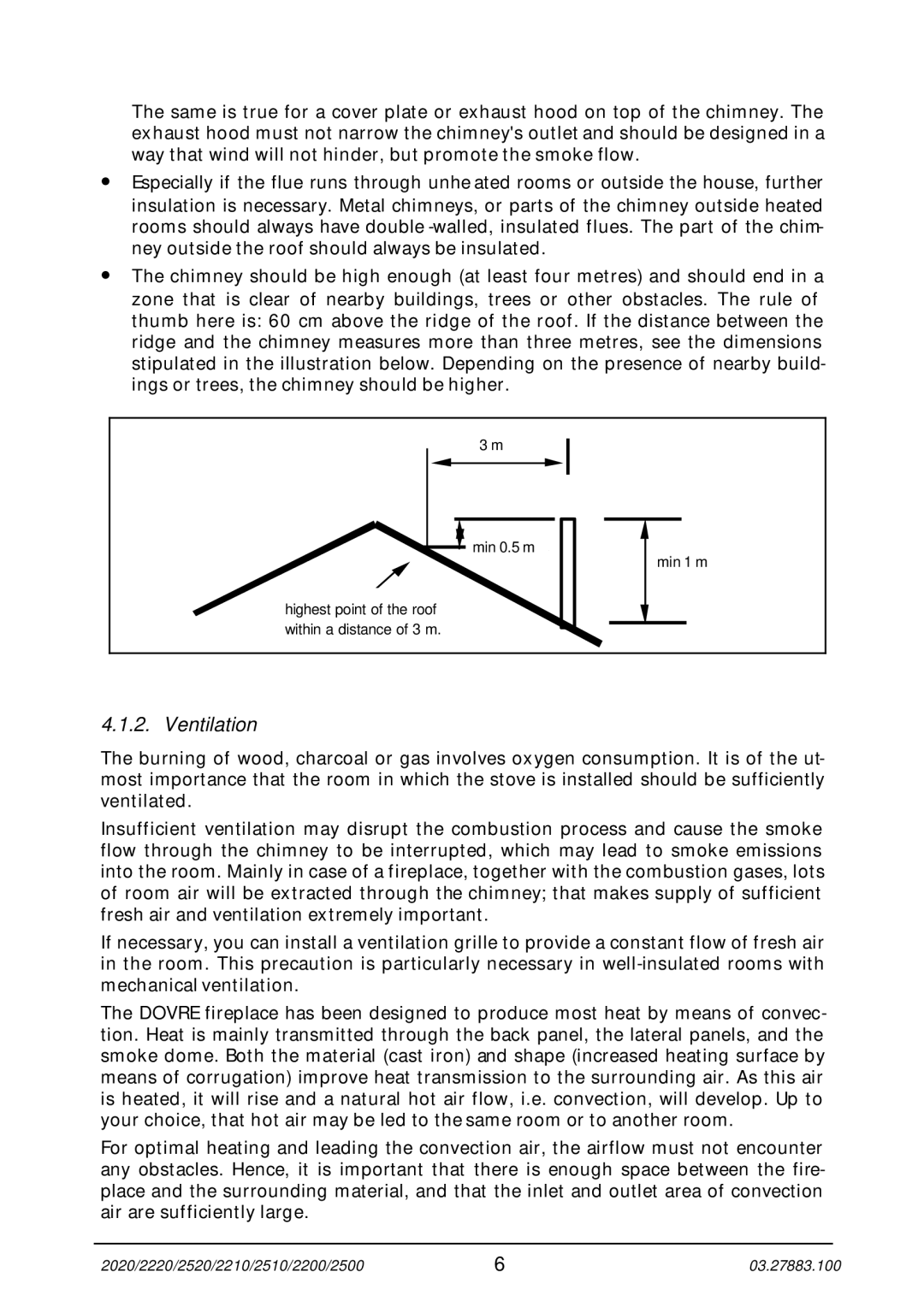
The same is true for a cover plate or exhaust hood on top of the chimney. The exhaust hood must not narrow the chimney's outlet and should be designed in a way that wind will not hinder, but promote the smoke flow.
∙Especially if the flue runs through unhe ated rooms or outside the house, further insulation is necessary. Metal chimneys, or parts of the chimney outside heated rooms should always have double
∙The chimney should be high enough (at least four metres) and should end in a zone that is clear of nearby buildings, trees or other obstacles. The rule of thumb here is: 60 cm above the ridge of the roof. If the distance between the ridge and the chimney measures more than three metres, see the dimensions stipulated in the illustration below. Depending on the presence of nearby build- ings or trees, the chimney should be higher.
3 m
3 m
![]() min00.5.5mm
min00.5.5mm
highest point of the roof within a distance of 3 m.
min 1 m
4.1.2. Ventilation
The burning of wood, charcoal or gas involves oxygen consumption. It is of the ut- most importance that the room in which the stove is installed should be sufficiently ventilated.
Insufficient ventilation may disrupt the combustion process and cause the smoke flow through the chimney to be interrupted, which may lead to smoke emissions into the room. Mainly in case of a fireplace, together with the combustion gases, lots of room air will be extracted through the chimney; that makes supply of sufficient fresh air and ventilation extremely important.
If necessary, you can install a ventilation grille to provide a constant flow of fresh air in the room. This precaution is particularly necessary in
The DOVRE fireplace has been designed to produce most heat by means of convec- tion. Heat is mainly transmitted through the back panel, the lateral panels, and the smoke dome. Both the material (cast iron) and shape (increased heating surface by means of corrugation) improve heat transmission to the surrounding air. As this air is heated, it will rise and a natural hot air flow, i.e. convection, will develop. Up to your choice, that hot air may be led to the same room or to another room.
For optimal heating and leading the convection air, the airflow must not encounter any obstacles. Hence, it is important that there is enough space between the fire- place and the surrounding material, and that the inlet and outlet area of convection air are sufficiently large.
2020/2220/2520/2210/2510/2200/2500 | 6 | 03.27883.100 |
